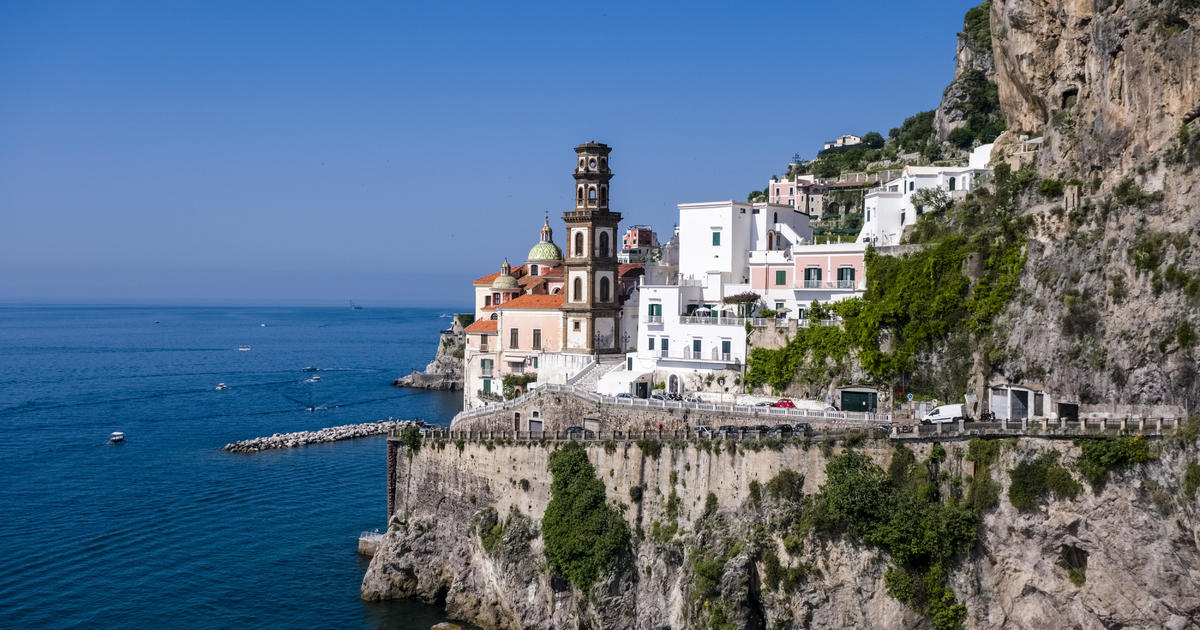Artist trapped by "Love"
Artist Robert Indiana managed to create one of the most popular images of all time - the immediately recognizable:
LO
VE.
But until recently, it was one of the most ripped-off images of all time.
"Unfortunately, due to my ignorance of copyright things," says Indiana, "most people know about 'Love,' and don't even know that Robert Indiana did 'Love.'"
Indiana, at 76, is determined to reclaim his place among America's major artists. He's painfully aware that love is not all you need.
For Robert Indiana, right now, we also need peace. That is the theme of his recent show at the Paul Kasmin Gallery in New York.
Indiana says the genesis of his current cycle of paintings came after he watched the World Trade Center collapse. "I went home immediately after that," he says. "I painted American flags on the front of my house on Vinal Haven."
The flags are still there - a conspicuous feature of the old Odd Fellows Hall, where Robert Indiana lives on Vinal Haven, an island off the coast of Maine.
Indiana says his subject matter is autobiographical. "It's my life in America, in Indiana, in New York, in Maine."
His home is an eccentric packrat's paradise. He arrived here from New York with 12 moving van loads of furniture, art and "stuff." Then there was everything the Odd Fellows left behind. He lives with a dog, several cats, and a flock of geese.
Like an artistic conspiracy theorist, Robert Indiana believes that his life has been one long series of fateful connections and coincidences.
"Six is obviously a very important number in my life because it was the red and green six of the Phillips sign against the blue Indiana sky that accounted for the colors of the 'Love,' red, blue and green love."
His father worked for Phillips 66. Its home office is in Bartlesville, Okla., where Robert Indiana recently had a show of his 66s.
Numbers aren't just numbers to him. They're a kind of personal numerology.
Robert Indiana remembers growing up desperately poor, his family devastated by the depression. For fun, his parents would drive around in their model T. In the 1960s he painted them with their car, his father wearing no trousers, his mother, Carmen, showing a bit of bosom.
"My fantasy, since I was born in '28, that I might have been conceived in 1927 in this particular vehicle."
He was born in New Castle, Indiana. His name was Bobby Clark then.
He says his first grade teacher asked if she could keep a couple of his drawings, saying, "'Bobby, I think one day you're going to be a famous artist.'"
In 1954, at the age of 26, he arrived in New York dedicated to fulfilling her prophecy.
He was so poor he scrounged whatever he could to work.
He stole wood to paint on when he didn't have money for canvas.
Robert Clark decided he had to do something to be noticed, so he called himself Robert Indiana after his home state.
"The best thing I ever did was change my name," he says. "Robert Clark really wasn't a terribly interesting person at all," he says. "He who assumes another name, it simply removes him from his early identity and he becomes a new person."
Equipped with his new name and a stencil he found in his loft, Robert Indiana was suddenly a pop artist, who, like Andy Warhol was inspired by popular culture.
Words fascinated Robert Indiana, the words on the signs that cover the American landscape.
"I feel that I am a sign painter. I mean, I make paintings that are signs, but as far as I'm concerned important signs, signs that say something, that have very meaningful messages, warnings, celebrations, things of that nature."
"The 'Love' of course has altered my life - it was a major sidetrack," he says.
A sidetrack because nobody paid any attention to his other work - particularly his American Dream paintings, which he believes are his most important. And also because, Indiana says, the art in-crowd turned on him. They thought he was a sell-out, getting rich on all those love rip-offs, which he wasn't.
Bitter and broke, in 1978, he exiled himself to Vinal Haven, to live the life of a recluse.
Robert Indiana works in a building overlooking the water that was in turn a sail maker's loft and a theater.
The importance of 2's and 6's in his own life made him take on a subject thoroughly identified with his better-known rival, Andy Warhol: Marilyn Monroe.
He says he is fascinated by the numerology of Marilyn - "the two and the six, she was born in '26, she died in '62, she was a member of 12 foster families, six times two, it just goes on and on."
Indiana's own legacy seems to be on his mind. As reclusive as he is, the very fact that Robert Indiana is showing his work again is a sign he doesn't want his epitaph to read, "The most famous artist you didn't know you knew," even though his most famous image has taken on a life of its own.
"There's now a 12-foot 'Love' in Singapore. There's a 12-foot 'Love' in Indianapolis... and there's a 12-foot 'Love' in Tokyo. There's a 12-foot 'Love' in Italy. There's a 12-foot 'Ahavar' in Jerusalem. Slowly, they're spreading across the face of the Earth. I have to face it, I know where I am stuck, it's going to be Indiana and 'Love' for the rest of time...."
He says it's not such a bad thing. "No, I'm very pleased."
Not only that, his dealers is now aggressively going after anybody who rips him off. Robert Indiana is finally making his peace with "Love."



